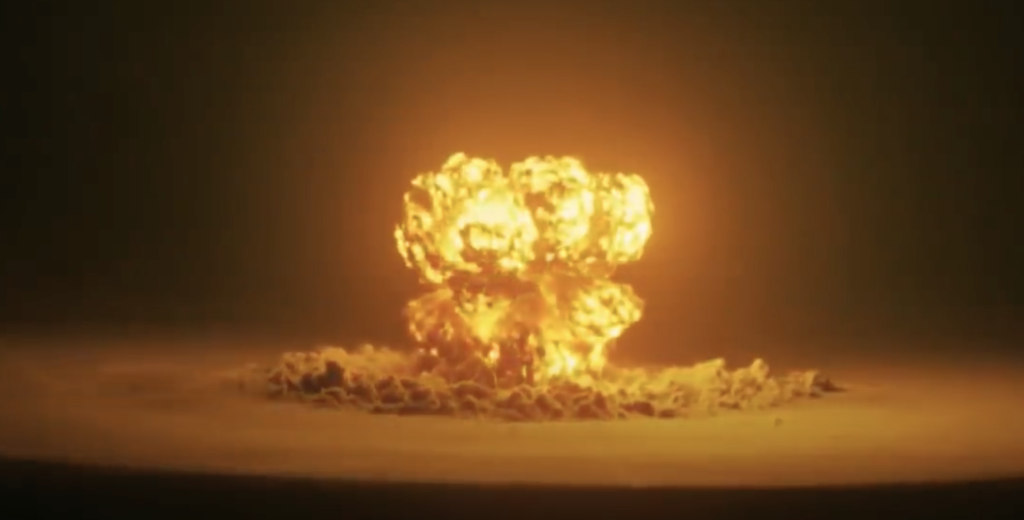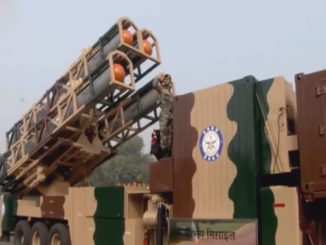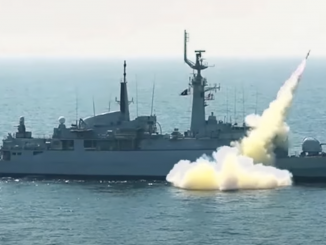
Recently a new arms control paradigm was proposed. The tenets of this proposition centre around two arguments. First, how much is too much? Second, what kind of changes in size of arsenal, types of warheads and nuclear doctrine could make this environmental and humanitarian disaster avoidable? The proponent of this idea, George Perkovich, analyses the nuclear non-proliferation discussion in environmental and climatic (humanitarian) perspectives in his paper titled Towards Accountable Nuclear Deterrents: How Much is Too Much? Whether the ideas put forth in this paper withstand the evolving strategic realities of the global security environment is the central inquiry of this critique.
The author goes on to explain in some detail how his suggestions combine the desirability and feasibility of minimizing a nuclear catastrophe risk. The author’s discussed premises are nuclear weapon states (NWS) and the non-proliferation and disarmament debate within the framework of NPT, the idea of deterrence works, nuclear weapons against a conventionally superior adversary, and the issue of escalation, escalation dominance and destabilizing arms race, to mention few.
George Perkovich proposes two global and multilateral initiatives for achieving his stated objective of arms control and minimizing the damage to the environment in a nuclear war. One, he recommends that NWS, along with non-nuclear weapon states (NNWS), need to conduct advanced scientific studies to precisely determine the impact on climate and environment if a nuclear exchange takes place between two states. To draw maximum benefits from such endeavours, the author suggests involving experts from computing, modelling and data sciences in those studies.
The other initiative would involve assessing all nuclear weapon states’ commitments to International Humanitarian Law (IHL) if and when to detonate nuclear weapons, and then evaluating whether their arsenals’ size and nuclear operational plans conform to their declared commitments to IHL. While discussing these two initiatives, the author introduces a new term, accountable deterrents. Accountable deterrents, according to the author, are those nuclear weapon systems which are acceptable to all countries in their strategic, legal and environmental terms. This type of deterrence, in author’s opinion, would be more credible than escalation dominance and prohibitionist models.
The author adds that the civil society, along with non-nuclear weapon states should also be included in non-proliferation discussions to make the proposed initiatives more acceptable. These proposals meet the need for nuclear deterrence on which state security hinges and helps decrease the risk of nuclear war, a fundamental concern of the society. Apart from the civil society, the author emphasizes that China could play an important role in promoting his ideas as China’s approach in terms of nuclear doctrine, nuclear force development and postures has remained restrained.
Critical Overview
The paper attempts to initiate a serious discussion on the environmental consequences of a nuclear war. Amongst the two proposed initiatives, the first initiative, to conduct scientific investigation of environmental consequences of nuclear detonation, is likely to find support among both nuclear and non-nuclear weapon states. On the other point, the author emphasizes adherence to international humanitarian law in deciding if and when to detonate nuclear weapons in the second proposal. This may be problematic for states to accept. Deterrence has been the central pillar of nuclear weapon states’ security policies since the end of WWII. Considered as non-usable weapons, the amount of damage that these may possibly cause makes them the most potent feature in a state’s deterrent structure.
For this reason, the idea would particularly be unacceptable to P-5 states. These states are signatory to NPT and as signatories they pledged to take steps towards disarmament, even though there has been no move to redeem that pledge in the last fifty years. Furthermore if moral considerations and humanitarian grounds had traction in policies of nuclear weapon states, they would have joined negotiations when the Treaty on the Prohibition of Nuclear Weapons (TPNW) was proposed by the New Agenda Coalition (NAC) countries as it presented an excellent opportunity for the NPT signatory nuclear states to develop a mechanism for universal nuclear disarmament. TPNW was rejected by not only nuclear weapon states but also the states which have nuclear security umbrella. There are two landmark judgments (though one is in advisory role) by International Court of Justice, Legality of Threat of Use of Nuclear Weapons 1996 and Marshall Island Case 2016, in which ICJ clearly iterated that there was no international law or treaty which made possession and use (and threat of use) of nuclear weapons illegal for defence purposes. If there is a need to prevent the use of nuclear weapons, major nuclear weapon states should focus on prevention of the use of force at all.
The author’s ‘accountable deterrents’ concept is totally hypothetical, unrealistic, and unachievable. Two countries in an adversarial relationship are not likely to be very considerate to others if their own national security is at risk. Nuclear weapons discussion apart, there is no evidence to support the view that a country’s operational plans including strategies that limit the damage to the climate. For the sake of discussion, if the notion of accountable deterrent is considered practical, it proposes that to avoid an environmental catastrophe, the size, yields and targets need to be reduced. If the size and yield of a nuclear weapon is reduced, it is more likely to be used against military targets, not against cities. Countries possessing small yield nuclear weapons in greater number will prioritize counter force targets over counter value targets. A nuclear strategy that aims at the destruction of counter force targets may start a fierce arms race among nuclear weapon states and look towards increasing the number of warheads in their arsenal.
Moreover, it is also unclear that which authority would verify the number, yield, and targeting capability in case one country claims to have accountable deterrence. As the author mainly focused on the environmental and climatic cost of nuclear weapons, it is really unfortunate that major countries, such as the U.S. and Russia, only use climate as a political agenda without any substantive steps in previous decade. The proposal of accountable deterrence and rationale of smaller size and lesser yield nuclear weapons is only to justify the new development of low-yield warheads by the U.S. as indicated in the 2018 Nuclear Posture Review presented by Donald Trump’s administration. The author suggests that China could extend the restraint in its nuclear force posture and play a pivotal role in building a new approach to arms control and disarmament, on humanitarian grounds. Putting the onus on China, the author overlooked the fact that UK and France also do not need nuclear weapons because of the absence of any existential threat to the two countries.
In South Asia’s context, the idea of accountable deterrent will be more destabilizing. Would it be acceptable for any country, in environmental, strategic or legal terms, to use low yield nuclear in densely populated urban or semi-urban border areas? On the issue of reduced size and low yield weapons, this kind of idea will give validation to current Indian thinking on revision of its No-First Use and targeting policy from counter value to counter force. It would serve the purpose of strategic stability in the region if a proposal on Strategic Restraint Regime, proposed by Pakistan, is endorsed rather than ideas such as accountable deterrence. The latter is nearly infeasible in practice, simply for its ability to reduce uncertainty brought through connotation of traditional nuclear deterrence and strategic stability.
On the whole, global norms are still far from being multilateral in approach, so there is a very limited role that the international civil society can play in shaping leaders’ opinions about nuclear weapons and deterrence. If multilateralism could play a role in global order, then forums such as the United Nations need to play an active role in conflict resolution.
Conclusion
The kind of modernization plan, which does not focus on nuclear disarmament, only adds to instability with regards to nuclear weapons’ possession and their use. This kind of approach gives nuclear weapon states logic to increase the number of nuclear weapons with reduced size and yield. The current debate on resumption of nuclear testing suggests that the trend is tilted towards nuclear armament instead of nuclear disarmament. Thus, the proposal pertaining to accountable deterrence is impractical and unlikely to make any impact on the thinking of nuclear weapon states.
![]()




Excellent article providing critical appraisal of Perkovich’s paper on accountable nuclear deterrence